CES 2019 Show Report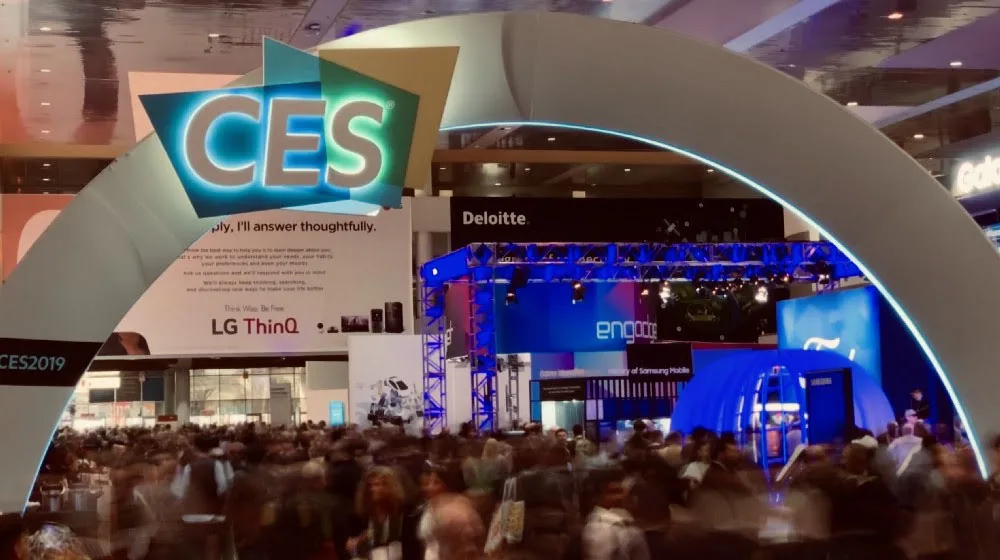
CES 2019
The Consumer Electronics Show is the annual gathering of over 180,000 people from all over the world who converge on Las Vegas to see the latest and greatest from over 4,000 exhibits. This year was interesting and thought-provoking. Many technologies are maturing and what is needed now is a great deal of work to make them far more usable, useful, and desirable for the mass market. Enjoy.
- Assistants/Voice
- Smart Home
- Television Viewing
- Artificial Intelligence
- Sensors
- Mirrorless Cameras
- Transportation
- No Wires
- PCs/Gaming/Work
- Eureka!
How Did CES Feel?
Some years CES feels like a deep technology show with everyone talking about something that requires hardware, new software, and a lot of work to even do something (3D TV, WiFi, home disk storage). Some years CES feels like attendees are overwhelmed with one specific technology no matter which way we look (HD, 4K, internet). Over the past couple of years we have seen a lot of ingredients working to come together as products virtual assistants, home automation, sensors to name a few. CES 2019 is a kind of year that sort of screams “we’re ready for the products that really work.” In that spirit, CES 2019 is a year where products are close, but seem a product manager iteration away from being a product that can reach a tipping point of customer satisfaction and utility. Products work in a “thread the needle” sort of way, but a lot of details and real life quickly cause things to become frustrating.
This feeling for me is part of the cycle of CES. I like to think of it as the universal remote problem everything starts to work but to really work you long for that one simplified control point. The challenge is making that while all the other pieces are still moving. That’s the nature of Consumer Electronics (tech in general) which is that there are many parts moving at different velocities and in slightly different vectors it means sometimes we go through phases where we seem really close.
We’re really close. We may or may not get there before things change a whole lot more move in a new direction, pivot due to a new technology, or try a different approach. That doesn’t mean innovations are poorly executed or even “bad.” It just means that there’s more promise than delivery, even with a lot of amazing work, difficult problems solved, and so on. A positive example of this are home alarm systems in 3 years these have made massive progress and you can now put a monitored home alarm in your house in probably an hour and pay almost nothing for hardware and 1/4th for monitoring. Amazing. Yet if you think this will seamlessly integrate with a bunch of other home automation you are going to be either frustrated or will thread a tech enthusiast/nerd needle. Progress, just not as much as promised.
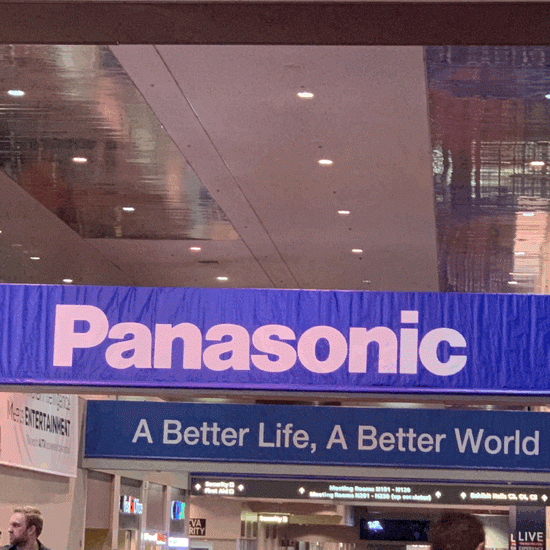 Everyone at CES is making life easier!
Everyone at CES is making life easier!
CES 2019 might have been as crowded as it ever (though it felt thinner) was but it was also different in how it “felt.” The final numbers will almost certainly show “record numbers” as the CTA (the trade group that puts on the show) is highly motivated for that to happen. Aside from the fact that there were almost certainly about the same number of people attending by some measure, four things felt different:
- China attendance was very high, and it seemed systematically so. My sense is CTA put in a real effort to bring attendees from mainland. There were a lot of organized show floor tours with translation, for example (and boy do those gum up traffic around booths). I saw groups with leaders/translators from both high schools and universities (wearing uniforms or matching track jackets), governments (badges with “City Government Of…”), and company management teams. News stories have said the booths from some Chinese companies were absent but I was unclear on which companies were not at the show this year (Xiaomi didn’t have a booth and had a big presence last year, but that was it). The major Chinese CE companies (TCL, Haier, HiSense, ChangHong, CNC, and so on) all had booths. While it is over-generalizing, these companies are still in the fast-follow phase for the most part. In this regard, Huawei really does stand out. JD, Alibaba, and others had pretty big booths.
- Booth space defrag. Every year a couple of booths move around (amazingly, year after year you get used to booths being in the same place). For me the last big change was HiSense taking over the Microsoft space a few years back. Right away there were big changes this year as the Central/Main hall featured Canon and Nikon close to the front this was an indication of their mirrorless camera investments/launch and how important those are and they had much bigger booths ($$$). In general, a lot of booths felt bigger. Other spaces like the Westgate have completely converted from small country booths/components to a collection of city/urban/transport in a less dense and more airy environment. I don’t think we will really know, but I suspect there were somewhat fewer unique companies overall, with bigger booths as the overall exhibit space went unchanged.
- Eureka! Startup Space is almost a different show-within-a-show. The “startup” space which is branded as being on the front lines of innovation has become almost a completely different show. The country booths of past years have morphed into country-specific incubators (Le French Tech, for example). In addition, this area features Kickstarter and other accelerators/incubator spaces (eg North Carolina Startup Pavilion, Holland Startup Pavilion, Chengdu Incubator) where one organization owns the space and sponsors some number of smaller booths. The density of this area is intense as booths are mostly fixed size tables and the section occupies a whole section of the Sands. It is too crowded now. More on this below.
- The scale of Google’s participation. One can only describe Google’s footprint as massive and unprecedented. This is a continuation and upsizing from last year. The number of people from Google wearing Assistant jumpsuits occupying nearly every booth that supported Assistant along with the branding that was seemingly everywhere was incredible enough. Then you realize there is a massive tent (building) in the parking lot and signage up and down the strip and…mind blown. TBH, in past life we’ve sponsored many of the things Google does (like having a booth at the main entrance or owning the Fashion Show sign) and honestly cannot rationalize the economics (tl;dr there is next to no revenue!). Maybe I am just old and a stingy marketer (I’ve been called worse). I would not be surprised to learn that Google’s investment in CES is the largest of any company or a close second to Samsung (except they have to bring everyone from Korea, not Mountain View). Here’s my baseline comparison. When we launched Windows 7 we staffed up to make sure every booth with PCs that supported or were running Windows 7 had some branding (like a topper for the PC). That was a lot of booths! Google did the same for Assistant support (as many booths?) but also had a Google uniformed staffer at each booth the whole show that is scale!
This summary will dive into a number of product/technology areas. As is always the case, this is one-person’s view and one lens. I can’t cover the show like the amazing tech outlets do nor am I even remotely expert on a huge amount of what is on the floor. It isn’t my intent to cover all the products and especially not all the big companies and announcements. I just walk around, 60,000+ steps this year, and watch all the demos and talk to the people at the booths.
The Big Question: Where To Be Smart and Integrate?
Over the past couple of years with the arrival of voice assistants, the growth of streaming, and the maturing of substrates of home automation networking we are in a new world of consumer electronics for the first time most everything can be connected to everything else and most everything can seemingly integrate with everything else. This is a dream long held by many. It is like the arrival of USB, HDMI, or programmable remotes.
Enabling all this progress are two innovations:
- Ever-Expanding Software Protocols. What used to be viewed as a physical connection layer or physics experiment, such as HDMI or sending IR codes, can now all be accomplished using much more flexible and capable APIs that traverse between elements of a system via WiFi, GSM, or Bluetooth and are brokered by cloud services providing some elements of authentication and identity. Sit back and think for a minute that it actually got easier to turn off your lights in New York by tapping a button on smartphone and sending the off command into outer-fricking-space and back through a datacenter in Idaho than to simply send 4 bytes worth of infrared 12 feet across the room.
- Ever-Cheaper Electronics. And those protocols are way cheaper and more reliable to place on a device because of the ever-cheaper and more capable chipsets with radios, storage, and sensors. The fact that a lightbulb or a switch can both contain CPUs and radios (and even run web servers) is simply nuts. Not only is it nuts, it is a commodity everyone can do this. Also because of electronics that lightbulb can be left on for the next 10 years consuming 1/10th the the electricity and probably outliving much of the rest of the house.
The amount of “smarts” available to enable a smarthome surpasses what most anyone thought would be the case say 15 years ago when WiFi or HDMI made their first appearance at CES. Of course the iPhone played a huge part in accelerating all of these by providing a much simpler point of integration, but now we see the role the cloud plays in making possible many of the scenarios people aspire to.
So many experiences built on those enabling technologies exist right now. It was just 5 years ago that CES was filled with banks of disk drives people were supposed to buy at home to store their own music and videos, and 10 years ago only the richest people could afford a crazy device that stored 200 DVDs ripped to a hard drive (you still needed to insert the DVD) to have movies on demand. For home control, 5 years ago people were still debating home automation control over powerlines (ack!) and protocols from the 1970s like X10 that almost never worked. There has been an insane amount of progress.
But, and I don’t say this lightly, there is much more promise than there is delivery and it is not clear we as an industry are on a path for all of these to converge to a simple, customizable, and reliable system that many believe is just around the corner. Hear me out before taking this to be more negative than I intend.
The worlds of houses, cars, and entertainment are immense, fragmented by geography (price points and culture, and more) and fraught with legacy integration scenarios. Each of those points makes product development immensely difficult on at least three dimensions:
- Developing a standard by definition means bringing together a large number of representative parties and navigating the world of fragmentation and their respective and differing constraints. Imagine the inputs (a pun) to the process to create the HDMI specification. The original spec for WiFi was something like 1800 pages, and that was decades ago. Simply convening this group and delivering a spec is a monumental process, before products even arrive.
- Deciding which standards to integrate, when to do so on a product roadmap, and how to expose standards is an unbelievable complex set of product management decisions. The bigger the company the more complex and time-consuming such a process is. This is why we often see startups born that embrace a standard and give us hope but the nature of this consumer electronics world is such that getting traction requires big companies that own infrastructure and legacy to participate.
- Ensuring anything that is delivered actually works across scenarios, varying amounts of legacy, and even other new products implementing the same standard is a testing or QA challenge that is almost impossible to quantify. Every day most of us experience the fickleness of plugging a device of any kind into a screen of any kind over 3 or 4 different connectors. Each of those implements a standard that is well-documented, thoroughly tested, and produced by companies with massive resources and yet…well we all know.
That said, we are in a new era. The challenges of the past have turned into a whole new set of enabling technologies, potential implantations, and an evolution of scenarios that brings us much closer than we ever have. That is why you should read all of this as a positive in a sense one should stand in awe of CES 2019 as a statement of the agility, investment, and opportunity even if so much of what you can actually do today seems like needle threading at best or a gimmick at worst.
On display this year was connectivity and integration for consumers based on about 10 years of incremental and sometimes hardly noticed baby steps. There are three big developments that are enabling the vast majority of scenarios on display at CES 2019:
- Any screen/speaker can play any streaming media. Whether via casting or cross-platform runtimes, any device can now connect to a streaming audio or video service and display or play content. The hardest problem of the 2000s was actually getting a signal from one place to another video over CAT5, whole house audio, or craziness like wireless HDMI were all precursors to the wifi/cloud/processor based streaming we experience today. By the way, it is just as amazing that everything being said applies as much to a house as it does to a moving car!
- Any device can be turned on/off/controlled by voice. Seemingly out of nowhere, everything can be controlled by shouting at it. Our homes can now be populated by a whole new family of digital friends Alexa, Siri, Bixby, and OK Google [sic]. Again, it was just a few years ago that every single device had a different way, if any way at all, to control it from another part of the house. By the way, it is just as amazing that everything being said applies as much to controlling within a home as it does to controlling from the other side of the earth. Plus these virtual assistants can be helpful in all sorts of other ways.
- Any device can have a radio and connect to any other device with a radio. Every device is now a radio. Radios can be WiFi, GSM, or Bluetooth. The ability to have a radio and power it has become so cost and energy efficient, one can hardly find anything that doesn’t have a radio in it. Even the cheapest TV remote controls are now RF solving one of the most annoying problems of the 1990s which was how to avoid “displaying” all your AV gear (gear which no longer exists). By the way, it is just as amazing that everything being said applies to devices plugged into a wall as it does to devices that just sit there waiting to come to life and connect when needed. It wasn’t that long ago that a home alarm system required running wires from every door and window to power those sensors which are now powered by coin-batteries for years at a time.
The industry has innovated a massive amount and come a long way. The ingredients for enabling scenarios are all there. The problem is that they are being delivered as point solutions and they beg for a more unified, friendly, and reliable experience:
- It used to be that you had a small number of channels to watch (500) and a very friendly guide with a DVR. Now there is infinite content to watch which is a dream, but finding what to watch then having the right app at the right time on the right device and navigating across that “stack” amounts to a plethora of choices and complexity. Do you go from a link on social networking to a phone app and then stream on phone? Or cast it? How do you learn where a show you heard about is available? Do you have a subscription? Do you launch the app on your tv or on a PC where you had to sign up? Do you need a separate box or does the app in your TV represent the best discovery process or is a phone or PC better? All of these work in a needle-threading way and for any given individual there are usage patterns that work well, but are they optimal for the person? For the content industry? For the CE industry? When you can play everything everywhere is that optimal or just the tyranny of choice? Do you really want to think about how to watch something as much as all these choices require?
- It is miraculous that with your hands full in the kitchen you can kick off a kitchen timer, start music, or while you are walking out the door shout for the weather to grab a coat all with the help of voice assistants. With a few taps and authentication steps any new device in your home can be connected to these assistants and also controlled…well not really. Again, this is not a binary can/cannot but rather a “does it really work?” and by that I mean does it work well-enough to be the only way to do something or a reliable way. In that sense, voice control just isn’t even close. But yet everything can be voice controlled. The real question is what does voice control really solve for and how to make it a reliable and complete solution.
- While everything has a radio, connecting everything to a network remains among the most nightmare of scenarios. Whether it is connecting to the MAC addressed fake access point, staring at blinking LEDs to pair, or scanning barcodes on a phone the mysteries of getting connected are far greater than any blinking “12:00” on a Betamax. Beyond that these connections remain fragile and lack interoperability. You want alarms, cameras, and more to connect to each other but today these are mostly systems and each system is incomplete. This whole space is a sea of acronyms that end up being the radio manifestation of a c. 2000 A/V receiver jack panel: ZigBee, HomeKit, Z-Wave plus WiFi, Bluetooth, and on top of that a plethora of hubs, access points, and controllers.
What is really going on, I think, is that the industry over-compensated the proprietary/vertical sins of the past and took advantage of the inexpensive silicon and freely available software runtimes to enable this complete N x M matrix of connectivity. In an effort to make everything more open, it moved all the complexity into the home. The problem is that the home is the least scalable of all places for complexity. Homes are filled with people of varying technical savvy, a variety of legacy devices that can’t be changed, and most people move a lot (11 times on average in the US).
While all of these smarts are available, the product manager view of things is that workable scenarios have not yet been carved out. The demos are there but beyond a show floor or the most hardcore of tech enthusiasts they are not achievable.
The core question for all of the products as I walked the floor is “are the smarts in the right place”? Does every device need all of the smarts? For example, does every device need a microphone AND a network connection? How many cameras (microphones) does one need in a home? When does privacy risk outweigh benefits? How many different times in a home do I log on to a streaming service and from how many devices? Where will I get the optimal experience for any given service and how do I even know that? Optimal might mean just the basics of performance (because as the experience gets richer will it outstrip the silicon capabilities of a given device) or it might mean the browsing, personalization, viewing experience enabled by the specific implementation of a runtime on a device.
As I wandered the floor, this was the top of mind question for me where should the smarts be and how should products be connected so I can realize a great experience? I kept imagining the marketing team pleading for Alexa, Siri, and Google (probably not Bixby). The test team saying “please just pick one.” Engineering saying “well it is like 5 lines of code so sure.” And product management developing a demo script that worked so long as you stay on the track.
 Where should the smarts be? Everything connected to everything, controlled by everyone.
Where should the smarts be? Everything connected to everything, controlled by everyone.
With that, here’s what I saw at CES this year. This isn’t a list of every product or even the most important ones. For some reason or another, this is what caught my eye.
Assistants/Voice
By far the most ubiquitous development at CES last year and upleveled this year has been the assistant. In an effort to find what’s new at CES some might say that Assistants were 2018 and 2019 was something different, but really voice was omnipresent and a key part of just about every demo.
As mentioned, Google spent a ton of money and it wasn’t clear at all if Amazon did. Such is being the leader versus the insurgent. By that measure it looks like a two player race, with Siri a distant third.
The reason for this dynamic is clear integrating voice control is trivial once a product is connected to the internet and the company has some runtimes on AWS. Therein lies the problem. When something is trivial for products to do, they do it, whether it makes things much better or not.
 Anything and everything can have voice integration. Here’s a bed. Also, out of frame a Googler is staffing the booth.
Anything and everything can have voice integration. Here’s a bed. Also, out of frame a Googler is staffing the booth.
Two things are clear:
- Simple APIs mean more “apps.” My opinion is that Alexa (and then as fast follower Google) chose the lightest weight integration possible. A small, fixed vocabulary mapping to service calls. While this is powerful, it pushes the whole burden of user experience to the user it requires everyone to remember all the nouns and verbs capable in the world around them. It is literally requiring everyone to learn a foreign language. If this were presented as a command window we had to type in, the world would immediately reject this as a potential solution for the broad base of users. If you hook up enough stuff in your home, using an Assistant to control all of it resembles something of a frustrating game of 1980s Adventure there’s a light up ahead, turn it on.
- Early in lifecycle means “cross platform” is easy. Because these APIs are so simple it is not only natural but trivial for every maker to approach this as a cross-platform problem. This work is easy. I suspect most apps have a trivial layer that irons out the differences between Amazon and Google and “boom” everything works everywhere. This, however, is not sustainable. The problems everyone has in actually using assistants for more than a tiny set of features or demos is that the vendors will enhance the platform in different ways and what seemed like trivial cross-platform will diverge. This always happens with cross-platform. Always. If there is no divergence, then it is likely we will get stuck in this current state for a long time and these assistants will fade away to be replaced by an entirely new generation with a different reflection of capabilities.
This whole dynamic needs to shake out. I’ve been repeatedly bearish on this generation of voice control, not because of the spectacular success at going from spoken word to AWS lambda code, but in figuring out how to know what to say given the infinite context and flat command space.
The other aspect of this that needs to shake out is whether a device embeds an Assistant that is adds a microphone and processor or it simply takes advantage of a remote speaker that routes commands to devices over connectivity. A surprisingly large number of devices chose to integrate silicon and microphones into devices and I just think this makes little sense, and even less sense if there is a screen. It is perhaps ok if a washer has a WiFi chipset and can be connected to an app, and thus voice controlled. But the last thing a home needs is to be filled with microphones waiting to be hijacked.
That said every single device and demo had voice control. I could list everything at CES and that would be this section. What I walked away with though was the same impression as last year which is that you have to have a printed cheat sheet of commands and devices to operate your home and some large percentage of time what you utter makes little sense and probably won’t work “Alexa garage door open home garage door front” or something is what I need at home.
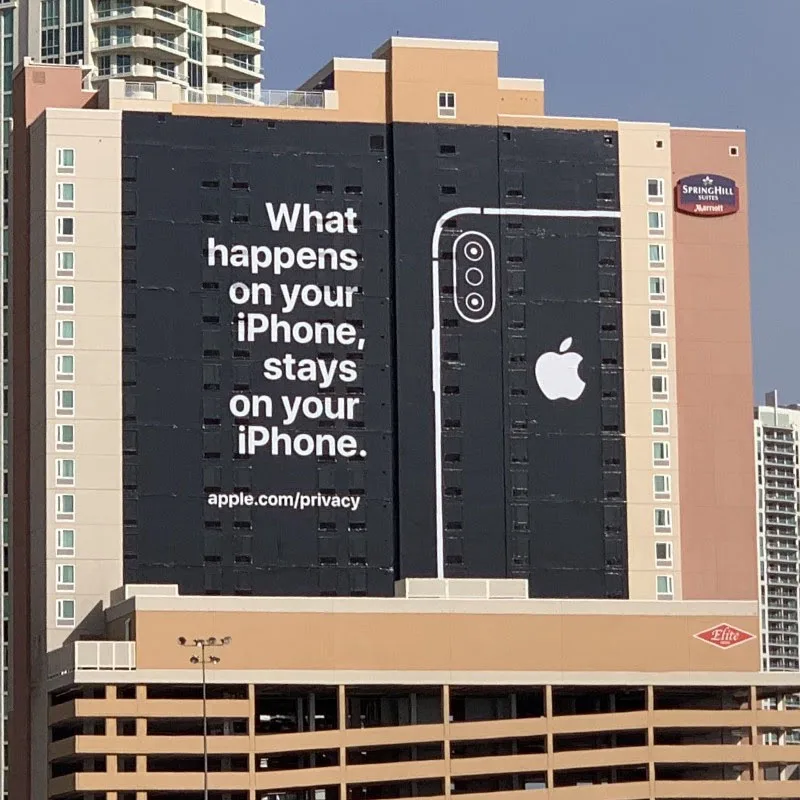 Apple had a slightly different message when it came to CES and all the services being shown.
Apple had a slightly different message when it came to CES and all the services being shown.
Smart Home
The Smart Home made a great deal of progress this year. It is entirely possible to enter the home control market from a variety of vendors offering commodity pricing and with little effort control the following:
- Perimeter security
- Monitoring cameras
- Appliances
- Lighting
- Home infrastructure (water, HVAC, gas, etc.)
It is shocking how quickly the products and economics of home security have changed. There are easily a dozen companies selling a kit with a GSM/battery backup hub, door sensors, glass sensors, and flood sensors. Here’s the catch though. After those sensors the kits rapidly diverge and either lack capabilities or try to make up for what is missing by “integrating” with third parties.
One of the interesting developments likely to happen in security is that WiFi routers can be physically integrated with the hubs required for perimeter security. FirstAlert (the smoke detector people) acquired a mesh WiFi router company and are integrating that into their smoke alarms, called OneLink. What’s interesting about that is that the alarms in many places require line voltage so it is easy to replace an alarm with an alarm/access point and get WiFi coverage. OneLink has a doorbell which then does audio over the smoke alarm/access points (also the smoke alarms are Alexa speakers). See how this keeps ending up.
 Energizer (batteries) suite of retail store ready sensors for perimeter security. No base station or service just alerts on a phone.
Energizer (batteries) suite of retail store ready sensors for perimeter security. No base station or service just alerts on a phone.
At the very low end of home security, Energizer has basically a point of sale bubble packed set of components for doors and windows that do not require a hub. They simply alert you on an app. These endpoints use WiFi and not a low energy protocol, which is great for Energizer since you have to replace the batteries every few months.
All of these beg to be more integrated beyond the first party components. Nest used to be the fall back integration point because none of the alarm companies supported thermostats or cameras. Now some are adding cameras but the choices of cameras are limited. Some have lamp switches/outlets/light switches but these are never as nice as what you can get from Lutron/Leviton/Philips. And beyond that the control of these goes from fancy “themes” and schedules to simple on/off.
The allure of simple integration makes one feel there is a complete product but there really isn’t. The root of this is the simple API across all the home radio standards. There are hopes, two of them.
First, Apple saw this problem and attempted to address it with HomeKit. But HomeKit’s integration required device makers to actually make a bet on Apple including changes to their own silicon. Most all balked. Recently Apple reduced requirements for HomeKit integration and so we have seen more devices, but at the same time reduced capabilities.
At this point if you’re going to try to automate a typical home and do so robustly there will be probably 6 apps and different systems that map to those above. More complex systems such as integrating water monitoring or electrical mains monitoring will require a dedicated device and app. These are real home infrastructure and it is not clear the companies offering these are up to the 10–20 year lifecycles that the associated devices are connected to (HVAC, gas line, water heater, etc.).
Lighting is the perfect example of where legacy hits reality and putting smarts in the right place is tricky. Right now the smart lighting solutions are all LED bulbs for legacy fixtures. Those in turn require a unique hub. Then that whole system is controlled by a unique app with unique capabilities. Philips is the leader here but again this is a highly fragmented space.
One of the most impressive advances in home control took place in the front entry door to homes.
There were three big innovations:
- Door locks
- Video doorbells
- Package delivery
The first connected lock came out at CES about 5 years ago and attendees quickly pronounced “disruption” over legacy lock makers like Kwikset and Schlage. What is incredible is how these two companies over the past couple of years have delivered a wide range of connected locks from proximity Bluetooth to fully internet connected. The lineup is impressive and speaks to the legacy world of locks they understand. Standing at the Kwikset booth attendee after attendee would describe a door situation one latch, deadbolt, but the door is really thick for example and the staff would march them over to a place with locks to choose from. Making a connected lock in the first place was brilliant but fitting into the world of doors was a job that was much harder than it looked.
 Kwikset locks not only avoided disruption but thrived. They have many price points and varieties of connected locks. Also announced was support for Amazon Key.
Kwikset locks not only avoided disruption but thrived. They have many price points and varieties of connected locks. Also announced was support for Amazon Key.
The Ring video doorbell was an all-time great invention. The company expanded to include some brilliantly designed perimeter lighting and finally available a complete home perimeter security system. Again here is where the difficulty of the space comes in. The doorbell is unsurpassed, though to be fair there are a dozen companies with doorbells that seem to be adequate copies of Ring. But the alarm system is just middle of the road the window sensors are huge and the system lacks a full range of detectors. There are much better suites of alarm sensors. But of course your Ring and Ring lights don’t integrate with those for any scenarios like creating an “Away” scheme don’t include the full suite of automations.
Ring announced but is not shipping a new Ring camera that slots into the peephole of a front door (or teenager’s door I suppose). It is battery operated and lasts for two months or so between charges. It is basically the original Ring with the form factor modified for the peephole attachment. It is perfect for an apartment renter. Super cool.

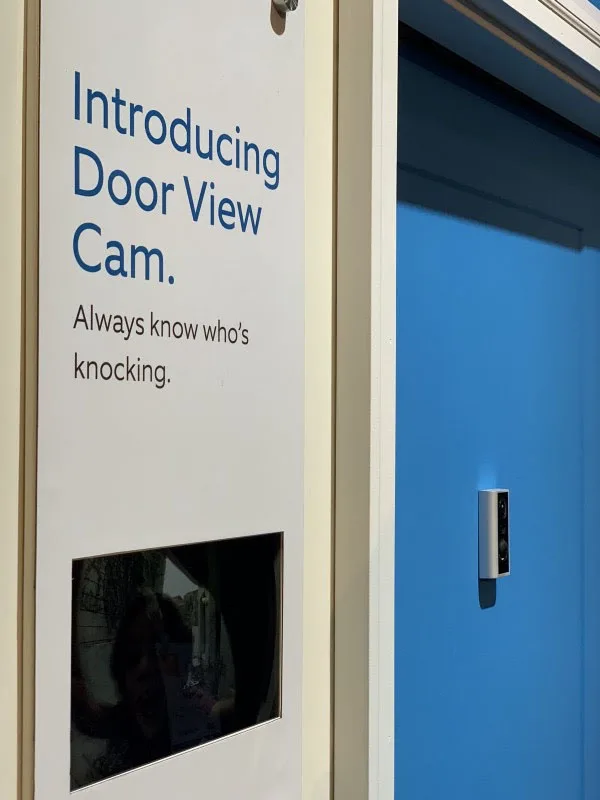 Ring’s new “Door View” which is a ring doorbell that goes in a peep hole. It is battery operated. Just announced.
Ring’s new “Door View” which is a ring doorbell that goes in a peep hole. It is battery operated. Just announced.
Ring was acquired by Amazon ($1B!) and the integrations are flowing to Alexa. One of the biggest integrations announced was Amazon Key, which gets to the third observation and that is package delivery. Package delivery is one of the biggest problems facing all of us these days we’re paying for PRIME delivery but spending two days bouncing back and forth signing slips, leaving notes, bothering neighbors. The Ring doorbell at least lets us catch video of people stealing packages but does nothing to prevent theft.
To many chuckles, Amazon announced a program (pre-Ring deal) that used their sophisticated EDI backend for shipping to connect to a home connected lock. The delivery person would get a one-time code when they scanned a package and then open your door to leave the package. There’s a lot to not like about this scenario (privacy, pets, children and if you’re UPS the time all of this takes).
Several years ago a Utah based company developed an entire end-to-end system that did this same “trick” but across all delivery agents but by using a connected garage door opener. I wrote about it at the time and thought it was super cool if you had a garage.
This year at CES Amazon and Chamberlain (leading garage door maker) announced that Chamberlain will be supported on Amazon Key. Chamberlain is also on HomeKit. I happen to have this whole system (it has two hubs and took about 4 hours to get working) but it is not live yet.
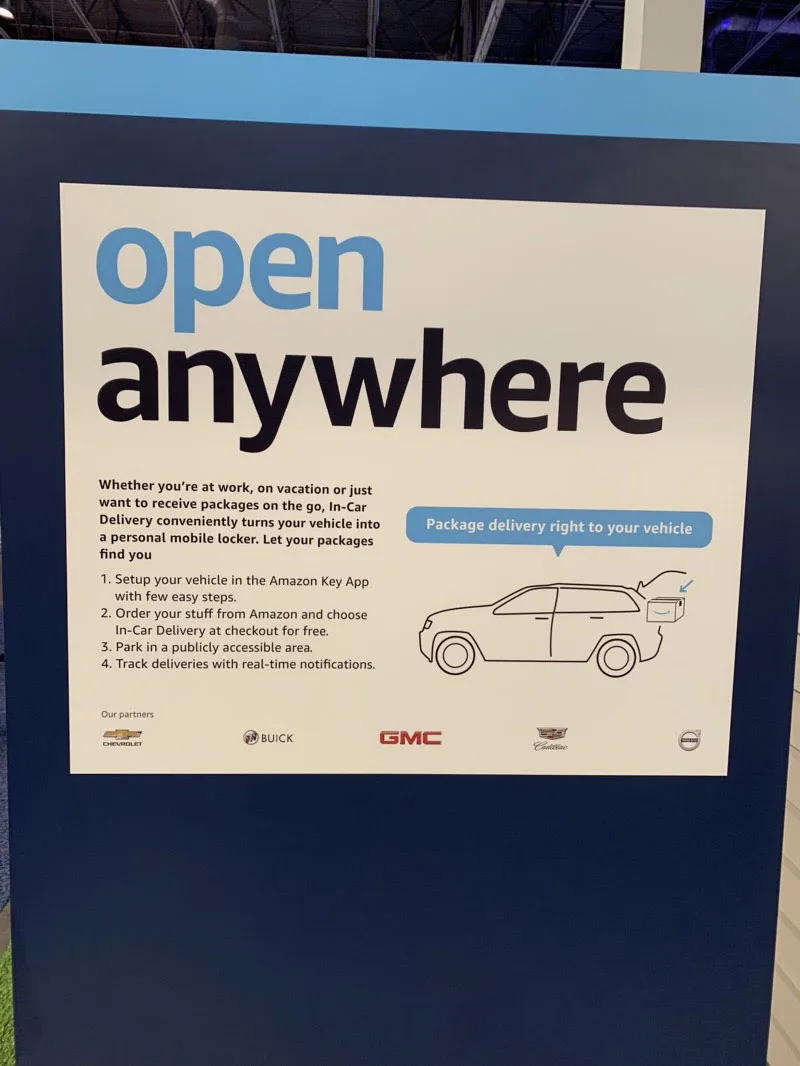 Amazon Key app can use your car as a delivery point, or open your door, and now open your garage.
Amazon Key app can use your car as a delivery point, or open your door, and now open your garage.
If you don’t have a garage or connected door (but not an apartment, no one has a solution for unattended multi-unit dwellings) there were several new approaches to boxes that essentially do the same connection to the delivery agents and provide keys. There are analog boxes that provide for one-time opening until reset by the owner as well (these are sometimes used in apartments). The challenge with boxes is just finding a place to put them that the delivery person can find and will use. They aren’t super attractive and then they need to be big enough.
One simple solution was eTETHR which is basically a needle on a coiled cord that the delivery person plugs into the box. Unless you punch a code when the needle is removed a high pitched siren goes off. The same company has a box as well. eTETHR is a package security system. (photo by company)
eTETHR is a package security system. (photo by company)
Television Viewing
TV has a very special place at CES and represents the emotional center of the show as well as the physical center the Samsung large screen TV is literally the first thing you walk into if you enter the central hall at the central entrance. TVs are a big business, but not compared to mobile phones and with average selling prices plummeting they aren’t as large in aggregate as PCs though have about the same run rate (230M or so in 2018) though a little growth in TVs.
Just when you thought we were all set with TV we’re all moving to 8K. 8K was everywhere. The good news is almost none of us will need an 8K set any time soon since for 8K to be useful the set needs to be huge. They sure are neat though. Samsung, Sony, LG, and more were showing ~100” OLED screens. They were incredible to look at and imagine a TV that fills a house.
Samsung and LG really led innovation with TVs beyond 8K. The two interesting TVs were widely reported:
- LG showed a folding/roll-up TV that collapses into a box that is about 1 foot square and the length of the screen.
- Samsung showed massive wall of TV composed of panels you assembled into any size or aspect ratio you want, called The Wall. This is more of technology demo but the technology in the panel is a next generation display beyond OLED called microLED that promises longer life, blacker blacks, and overall better picture than OLED or Samsung’s QLED.

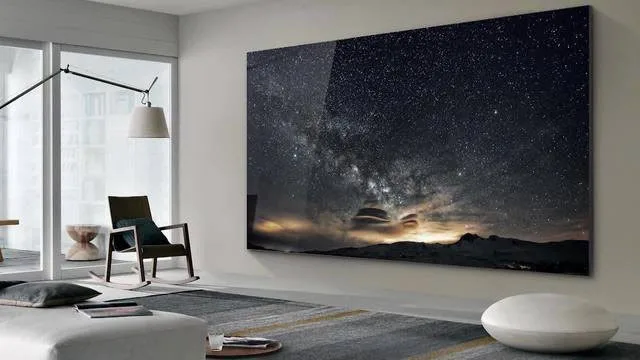 LG’s rolling/folding TV and Samsung The Wall (Samsung photo)
LG’s rolling/folding TV and Samsung The Wall (Samsung photo)
Beyond the rolling TV, curved TVs went the way of 3D and have been relegated to gaming monitors. For commercial use Flexible OLED is almost certainly a thing though there are too many potential uses that architects and designers would love to tap into, and also automotive.
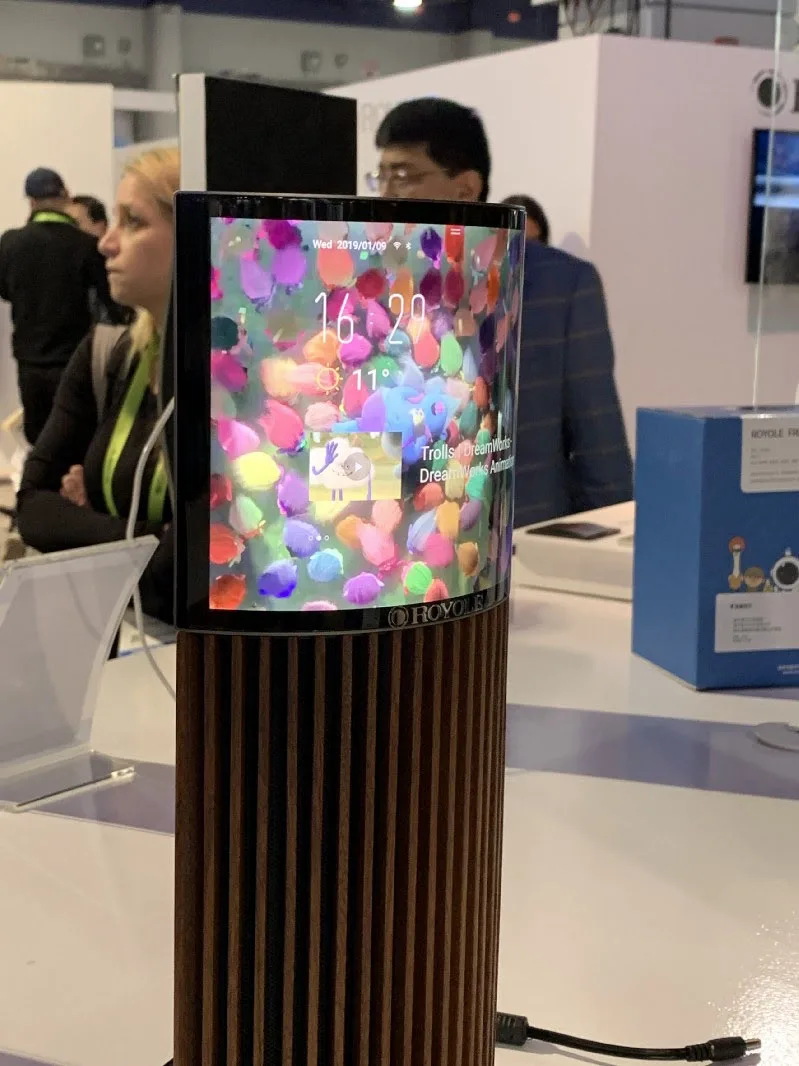 Curved screen at a new manufacturer that seems to have just appeared (Royole). Photo by Benedict Evans 🙂
Curved screen at a new manufacturer that seems to have just appeared (Royole). Photo by Benedict Evans 🙂
LG caught up with Sony and was showing a small form factor short throw laser TV that can project 120” image from 18” away.
The displays and quality of images continue to improve even on 4K screens. Of course the displays get larger, brighter, deeper blacks, and faster refresh. All while weighing less and costing less. The names and model numbers/product lines remain as complex as ever but online shopping is making it easier than ever to decipher all this (even BestBuy tells you model year now!).
This year doesn’t scream “can’t wait” for any new TV development and importantly there weren’t any gimmicks that we could argue over. 8K is not a gimmick. It will happen. It will be there. It won’t make much of a difference. There won’t be native content for a long time but it won’t matter we’re used to having pixels make things sharper not show more on our phones and so showing an HD or even 4K signal on 8K is just fine.
The big huge galactic announcement, the announcement that shook the show floor, was from Apple. Apple announced that Samsung TVs would be able to stream iTunes content. I hate to be a downer, but I don’t think this is a big deal for either Samsung or Apple. This is just part of the world of everything connecting to everything, making for a complex experience. I totally understand the point of view of “Apple opening up a walled garden” but that is not really what is going on here. Many products previously supported AirPlay and this is just an extension of this sort of arrangement. In many ways, Samsung has stepped up and replaced Sony as Apple’s living room partner. I just don’t think this represents a material change for either player.
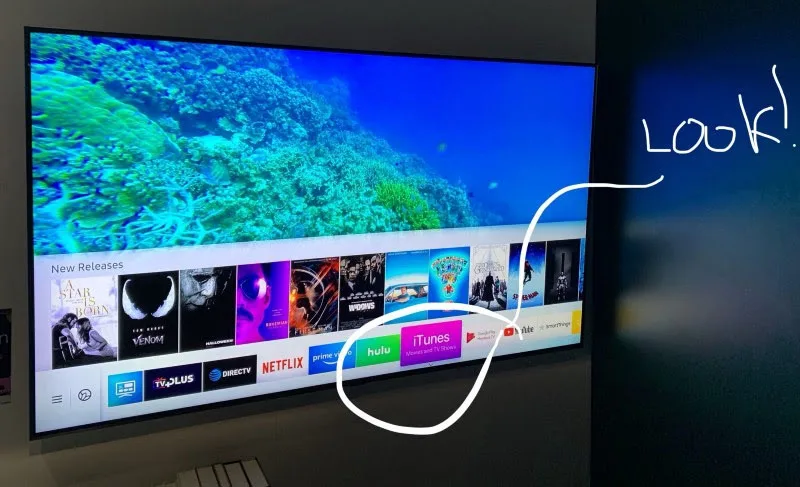 OMG OMG iTunes…not as big a deal as many were saying, IMHO.
OMG OMG iTunes…not as big a deal as many were saying, IMHO.
As far as sound, there were a few noteworthy developments:
- All the major makers are now doing speakers behind the panels (basically projecting sound through the pixels) as Sony has pioneered. This is pretty cool as surface area makes for better sound. In general, even as TVs get thinner and bezels smaller, sound is stressed but still quite good. The larger screens also have rear firing (against the wall) subs. In general, the OEM sound is much better than it used to be.
- Speaker bars are the new speakers. It seems having a speaker bar will be the default. This is the first development that makes TVs complicated but they dramatically improve sound. Conversely the era of having 5+1 or 7+2 physical speakers is going to be a very small niche I think. For most people, the processing provided by speaker bars, perhaps with a sub, provides crazy good sound. Go ahead, fight me. I know what I just said and how that drives audiophiles nuts.
- Dolby Atmos seems to have won. There was a bunch of confusion and resistance last year, but that has faded. Kudos to Dolby for finding a clever way into digital sound. The demos of Atmos are super amazing too.
The bigger question remains “what is a TV”? I know this sounds dumb to ask, but as the market increasingly moves away from programming distributed in fat bundles over COAX to streaming content over broadband (ironically that same coax, at least in north America) the question becomes what will become the “receiver” of “television.”
At first this feels like an easy answer. TVs have chipsets and app models and simply add the runtimes provided by all the streaming services. This is what TV makers hope the future looks like. The problem is TV operating systems aren’t very good and in particular the performance of apps and update frequency are lacking. TVs have notoriously poor security and privacy models as well. In order to differentiate and because there is no standard, TVs also build their own launchers and thus crowd the apps with a bunch of stuff you don’t want.
So then we turn to add-ons such as Roku or AppleTV to provide runtimes. These do a much better job at providing apps and launching. But with streaming this is only part of the experience. With broadcast TV, the idea was to leverage a program guide to identify what to watch (in a linear fashion or with a DVR). The equivalent of a program guide is the whole internet we learn what to watch from social networking. The problem is that TV apps or boxes are particularly bad at making the leap from the internet to a show. Even if you know the streaming service, TVs are really bad at searching because you use a remote to type in a show. Here is a narrow use case for voice that can work but is also tricky when it comes to old shows that might be on many services.
TVs are just bad places to run and control apps. About 10 years ago TV went through a phase where clients for Facebook, Twitter, MSN Messenger and more were built into TVs. They were awful, static, and hard to use. I just worry that the native apps for streaming services will go down this path too. And those apps are much richer already.
Beyond that the streaming services are all invested heavily in their own discovery models. Netflix has a legendary recommendation engine. Hulu is redesigning their model right now. YouTube has both a TV model and a model for the rest of YouTube, but the latter is really about clicking on links and watching very short videos at a high velocity which is super difficult on TV. Well you get the point if you disagree, even strongly, my sense is that you are threading the needle. By that I mean all of this works perfectly if you spend all your time in Netflix and watch shows recommended to you. But making the leap from Netflix to finding Handmaids Tale is a big leap (and the Hulu app has relatively uneven quality across platforms). Because there is so much investment in the in-service discovery, it is likely that building a guide or service that wraps all the other services will be a fragile endeavor. Tivo and Roku are making a run at this for sure.
This leaves us again with the question, where should the smarts be? What runtimes should be in the TV? Would the experience of next generation TV be better if you bypass all the software in a TV and just use a Roku/ATV? Or would it be better to use an iPad and cast from apps to a TV? In all cases, that darn TV operating system is still there and in the way, needing updates, perhaps making privacy mistakes and so on.
I left thinking the future experience of watching TV still needs a lot of work. Absent really addressing the seamless usability the competition for the screen will remain the phone or tablet. I would not be surprised to see living rooms of people watching substantial video on a phone while the big wonderful TV remains unused and is right there in front of you. That’s a usability problem for TV makers to fix and one content makers should be aligned with fixing.
Artificial Intelligence
Artificial Intelligence was everywhere. But seriously, I can’t even write this section with a straight face. The use of “AI” as a meaningless marketing buzzword was just jaw-dropping. I’m trying to remember something as egregious a technical “lie” as the use of AI and I really can’t come up with anything.
“Now with AI” was plastered all over every TV, washing machine, camera, gadget, and so on. Of course home robot vacuums and other labor saving devices used AI. It would have been mean to ask someone in a booth “What do you mean by AI?” so I did not.
The TVs were the worst offenders. Samsung had a wall dedicated to how they use AI across TV: AI upscaling, AI Streaming, AI content and connectivity, and AI Sound. All used a Quantum 8K Processor. Here you can see it here:
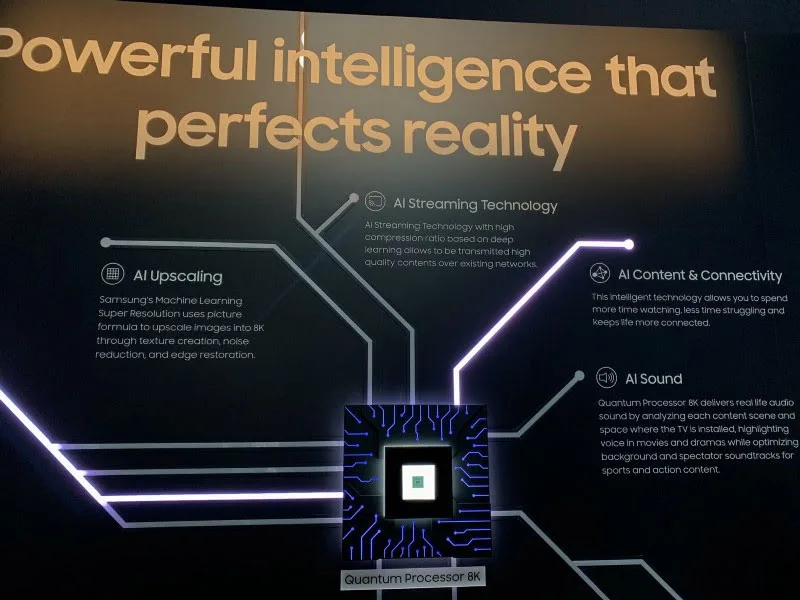 Samsung AI TV
Samsung AI TV
 Comparing an AI TV image with a non-AI one (“algorithmic”?)
Comparing an AI TV image with a non-AI one (“algorithmic”?)
I’m sure there are some image processing models being used. But equally sure we could do without all the AI marketing. I spent 10 minutes at this demo trying to see the difference in images. The demo leader even narrates the highlighted circles to tell you where to look.
Every once in a while there was an actual AI developed product. From an incubator at Harvard called Brain Robotics, they are developing the most affordable AI-powered prosthetic hand. The technique is familiar and does actually have the potential to be developed using learning models. A person without a hand still capable of transmitting nerve impulses can train the hand’s EMG receptors to act on those impulses. This is one of at least two companies taking this approach for brain-machine-interface.
Sensors
The ability to provide all sorts of sensors continues to get cheaper and easier. The biggest use case this year was a camera as sensor that recognizes specific people. This has been talked about for some time but is now at the commodity stage. Dozens of Chinese camera companies using commodity cameras and OSS libraries of image recognition are available.
There were a lot of depth cameras on display. The use cases were somewhat weak and seemed more like packages to sell to developers the way that Kinect was previously sold. In video conferencing depth cameras are being used to better identify speakers in a room as well as as fancy occupancy sensors.
At the other end of the spectrum, I just loved seeing this occupancy sensor. It is simply an analog low-tech motion sensor like you’d see in office lighting. This is used to show if a public restroom (changing room, exam room, nursing room) is occupied. Why isn’t this used everywhere? I loved the booth because the guy was yelling “no tech here”, “no cameras”, “just an occupancy sensor.”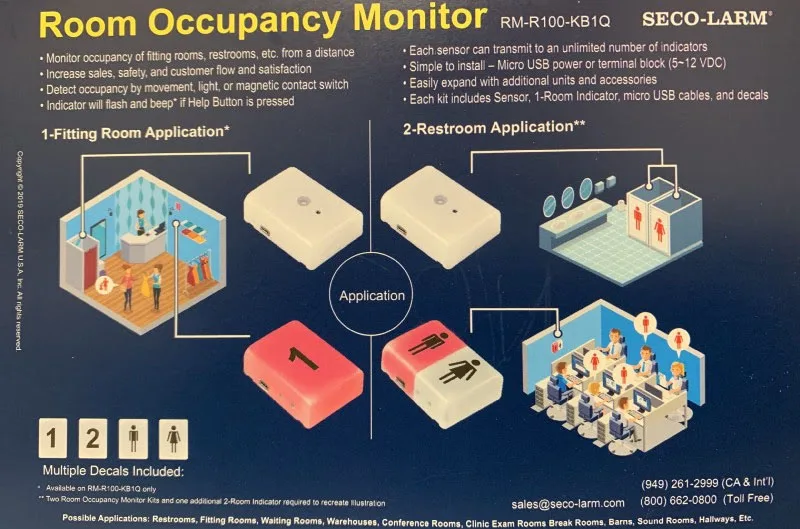 Sensors for health seemed relatively unchanged this year. All the big players with wearables or other monitors had pretty much the same product line.
Sensors for health seemed relatively unchanged this year. All the big players with wearables or other monitors had pretty much the same product line.
I liked this Philips shaver which has sensors and an app that helps those with sensitive skin do a better job shaving. Shaving is one of those things, as explained to me, that there is a massive amount of understanding in how to do it better but almost no one taps into that knowledge. P&G, the massive US consumer goods company that makes most everything, had a booth for the first time. It was very high on vision and trying to connect to the future customer. The booth had some custom 3D printed toothbrush handles that they intended to help you to order and fulfill to personalize brushing. They also had a walk-through booth of their store of the future where you could find the best cosmetics.
P&G, the massive US consumer goods company that makes most everything, had a booth for the first time. It was very high on vision and trying to connect to the future customer. The booth had some custom 3D printed toothbrush handles that they intended to help you to order and fulfill to personalize brushing. They also had a walk-through booth of their store of the future where you could find the best cosmetics.

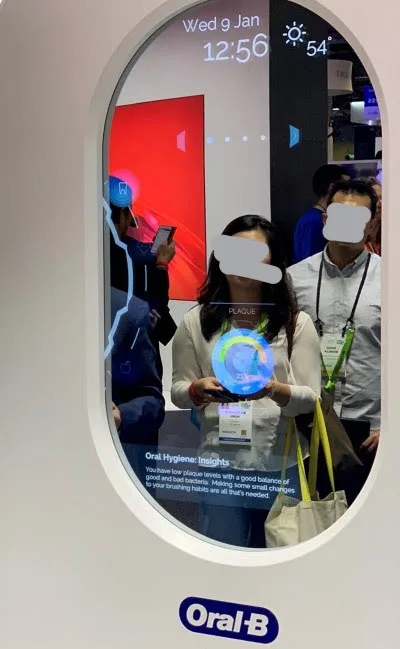
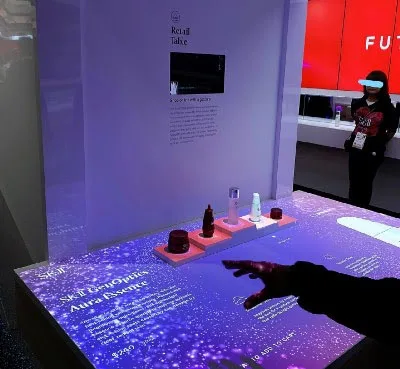 P&G’s vision focused booth: 3D razor handles, a mirror that helps you brush, an in-store experience.
P&G’s vision focused booth: 3D razor handles, a mirror that helps you brush, an in-store experience.
Mirrorless Cameras
As mentioned, one of the first things I noticed walking on the floor was that both Canon and Nikon moved their booths to the front. This investment (it is expensive) is likely connected to this being the announcement and delivery year of their entries into mirrorless cameras, an area Sony (and Fuji) have dominated.
Nikon announced and delivered their Z series cameras a few months ago (I used one on vacation this holiday). Canon quickly followed with the EOS R. Each also had a small number of new lenses designed around these new mounts (because there is no mirror, these lenses can be mounted much closer to the film and have much larger rear elements which offers optical designer new opportunities). Neither camera has blown people away and forums like petapixel are filled with near daily debates on how to fix these two cameras.
This is all a big story of disruption waiting to happen, so everyone thinks. Will Sony with its clean-slate design beat out established leader Canon? Will Nikon be able to once again take the lead with the platform shift to mirrorless?
It turns out everyone read the book and both Canon and Nikon are all-in on mirrorless now. But the pace is slow. Slower than most would like. At the same time, during the show you could see the pain in at least Canon who started to back off and recommit to the delivery of new DSLRs. Nikon on the other hand has been quiet and has only said there will be new lenses for DSLRs.
In terms of lenses, the interesting thing was the choice of first mirrorless lenses. Nikon had a very expensive body and a lens that didn’t quite match (the 24–70 f4, rather than the more professional 2.8). Nikon promised an exotic 58 mm f.95, but it will cost a fortune and not even auto focus. Canon on the other hand delivered a spectacular 24–70 f2 lens, a lens not even possible on the EF mount (or Nikon F mount) which is entirely usable.
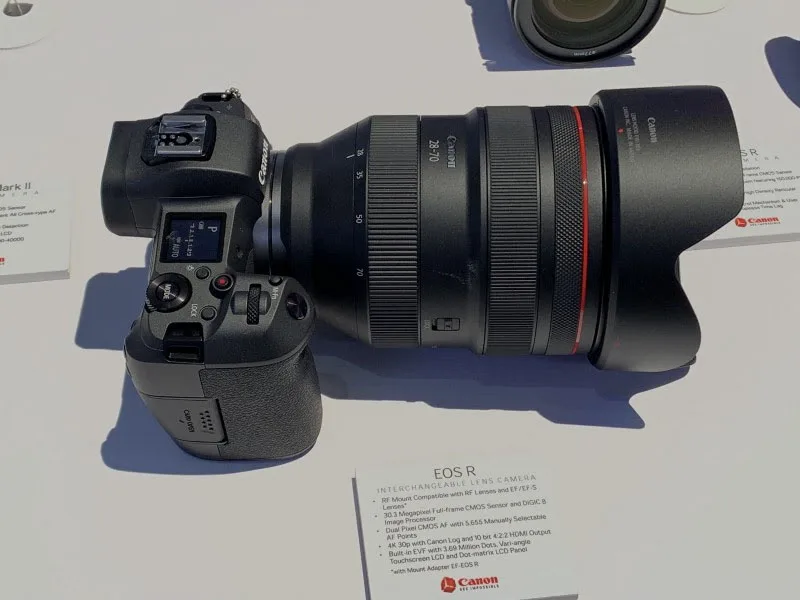 Canon 28070 f2 lens is big but handles super well.
Canon 28070 f2 lens is big but handles super well.
Both Nikon and Canon also have adapters that allow all existing F or EF lenses to work on the new bodies, without any image degradation at all (these are simply spacers that push the lens out). But here Canon did a better job than Nikon too providing several choices for adapters.
Nikon had an incredible investment in their booth. They were running 30 minute photo seminars all day with world-famous photographers offering shooting tips. Super cool. Canon finally got around to building a multi-camera bullet time setup which Nikon had been showing for years (even though the Matrix actually used Canon cameras!)
Nikon demonstrating it was all-in, aggressively revised the lens roadmap announcing a super wide zoom and pulling forward the 24–70/2.8.

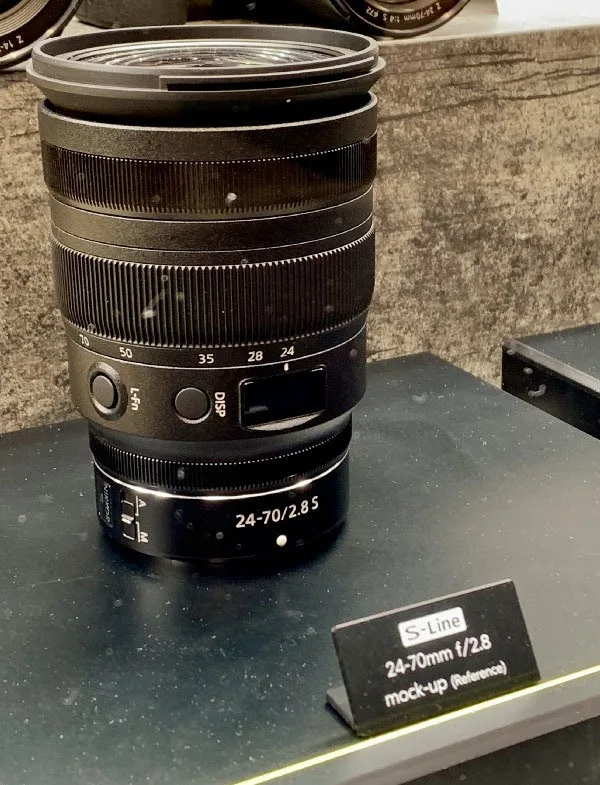 Canon invested a lot in a professional SDK for EOS cameras this year and showed off all sorts of ways you can use a PC to control cameras.
Canon invested a lot in a professional SDK for EOS cameras this year and showed off all sorts of ways you can use a PC to control cameras.
 Canon SDK. This is an automated product shot using the camera control SDK this camera takes a large number of shots and creates a 360 model.
Canon SDK. This is an automated product shot using the camera control SDK this camera takes a large number of shots and creates a 360 model.
DSLR or mirrorless cameras represent a tiny fraction of photos taken and photographers, but the images captured with them will come to represent history itself and so are important. For most this is an exotic hobby. For Canon and Nikon this is an incredibly important part of their business.
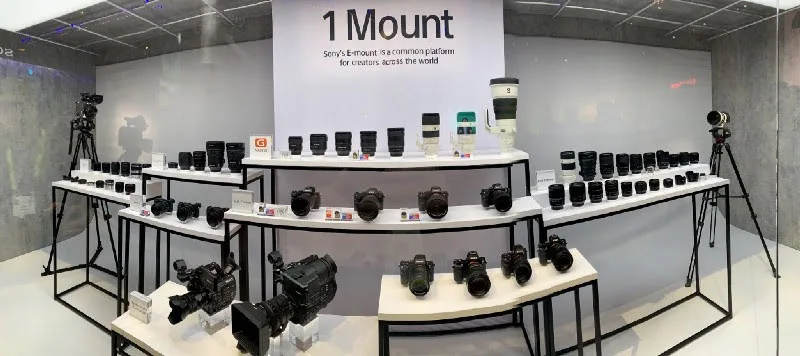 Sony has been investing in mirrorless longer than Nikon or Canon.
Sony has been investing in mirrorless longer than Nikon or Canon.
The next battle will be mirrorless and video. Nikon is ahead here. Canon used CES to announce an 8K capture is on the way. Sony has not caught on in video for the most part.
This is an exciting space. Probably one of the most exciting in terms of innovation, legacy versus new players, and importance to a specific customer.
Mobile phone cameras represent the big battleground for most of us and the vast majority of photos taken. I’m a huge fan of computed photography. iPhone’s portrait mode is amazing to use. Google’s Night Sight is a technology marvel. There’s no news there. I did spend time using the new Huawei camera on their phone that is sort of banned in the US. It has a lot of computed features but is also complicated to use. Part of Apple’s slow pace is also that they try to bring together a lot of features into something deliberate and not overwhelm the experience. It will be interesting to see if that comes across as slow or a positive. And certainly the advances of Night Sight will be a challenge, as low light photos have historically been the biggest problem in consumer photography since the dawn of the medium.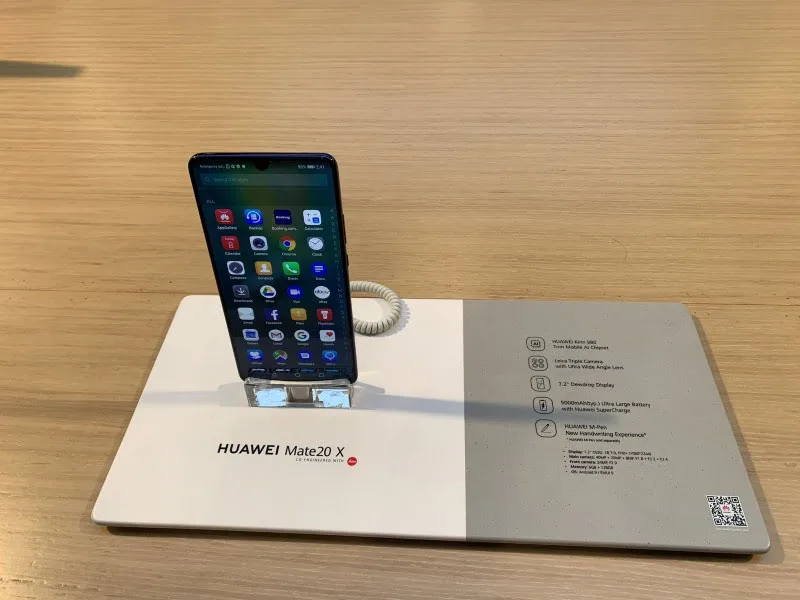 Polaroid is back with new instant cameras using the same film as the classic cameras. They are fun. Today these photos seems pretty low resolution though, which is interesting. One camera is now rechargeable and connects to your phone to do some added processing. There’s an app to help you scan the photo after it develops.
Polaroid is back with new instant cameras using the same film as the classic cameras. They are fun. Today these photos seems pretty low resolution though, which is interesting. One camera is now rechargeable and connects to your phone to do some added processing. There’s an app to help you scan the photo after it develops.
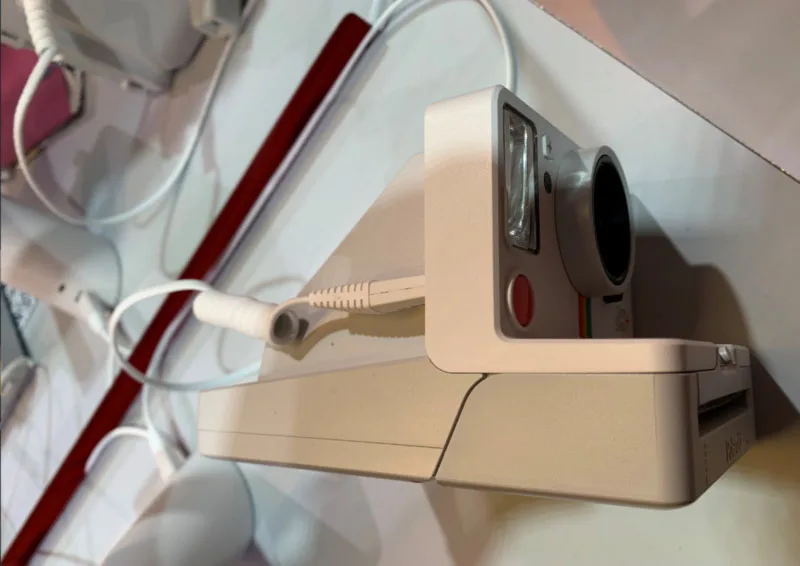 Polaroid next generation camera now charges via USB.
Polaroid next generation camera now charges via USB.
Transportation
This is about the 5th year with a concerted effort by the auto industry to appear at CES to send the message that they are technology companies. After this much time I am convinced this is not helping their case and the information provided, deals made, or learning are all minimal. There just isn’t a critical mass of the industry here to benefit themselves or attendees.
Of course I am huge fan of transportation and its evolution. It is great to see some of these companies but there’s nothing to learn. The major auto maker booths are literally just PowerPoint slides of old announcements printed on signs and existing cars. While there are a lot of component makers (that replaced all the auto customizer/audio booths) these are really not critical mass. For example, there were a handful of LIDAR companies, but I really doubt this is a good place to learn about the most advanced LIDAR and certainly this isn’t how the auto companies will learn.
 Designers were busy figuring out how to take up all the road space that was made available because of autonomous cars.
Designers were busy figuring out how to take up all the road space that was made available because of autonomous cars.
Perhaps the most content free aspects of the whole of CES are the “vision” presentations on the future of mobility and autonomy. There must have been a dozen companies that had a shell of a “future autonomous shuttle” on display. As far as I can tell, in the future when cars don’t need driver-side controls we will make cars really big and take up more space than a giant van but only have 4 seats. Either that or a industrial design firm like IDEO designed the same car for every vendor.
 Lots of scooters.
Lots of scooters.
Closer to consumer electronics were scooters. There were zillions of these. The scooters all seem much safer than the hoverboards of past shows. Similarly, there were a lot of e-bikes. I loved this unconventional one because it fit in a really small space but without contorting the frame it almost looked retro.
 Bike is only 4″ wide, has a 15 mile range.
Bike is only 4″ wide, has a 15 mile range.
There were at least two carry on luggage bags that were also scooters. And one suitcase while not rideable was a scooter. At least in the US, large batteries must be removed from carry-on luggage. Also there is like no room left for luggage. I much prefer the luggage with the razor that folds down, if only they made that in adult size!
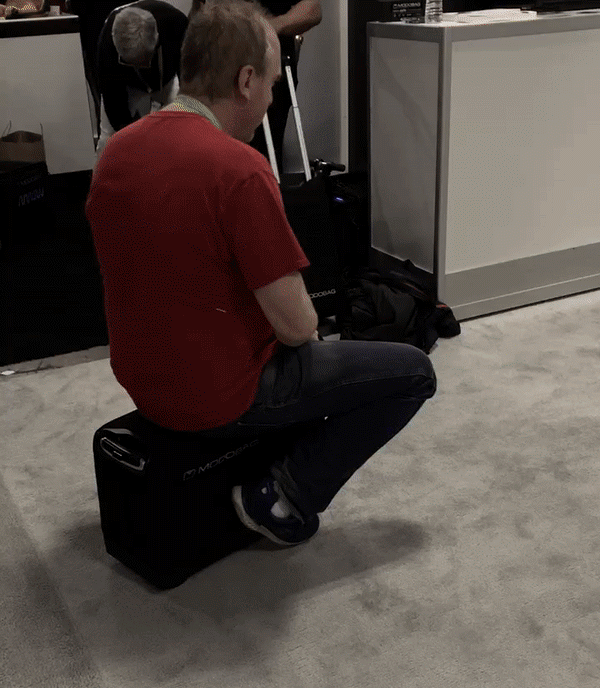 It is a scooter. It is luggage. It is both!
It is a scooter. It is luggage. It is both!
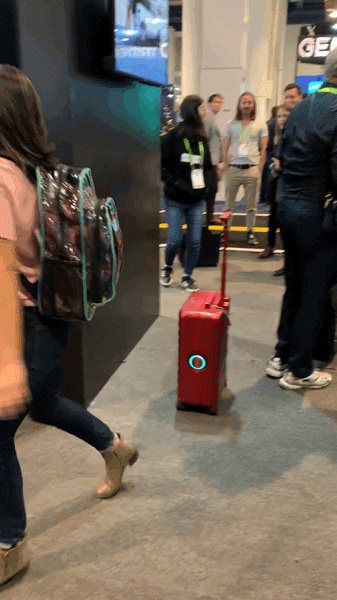 This autonomous luggage follows you around.
This autonomous luggage follows you around.
Maybe at the big Auto Show in Detroit there are people “on the edge” of reality with car designs. This was an interesting booth that claims to have an EV platform where you just replace the shell to get different styles of cars. While it seems practical and plays on the extreme lifecycle of an EV chassis (million miles), the problem is handling, center of gravity, and so on. Considering how much car design effort goes into physics, this seems like something that would not cut it at a real auto show.
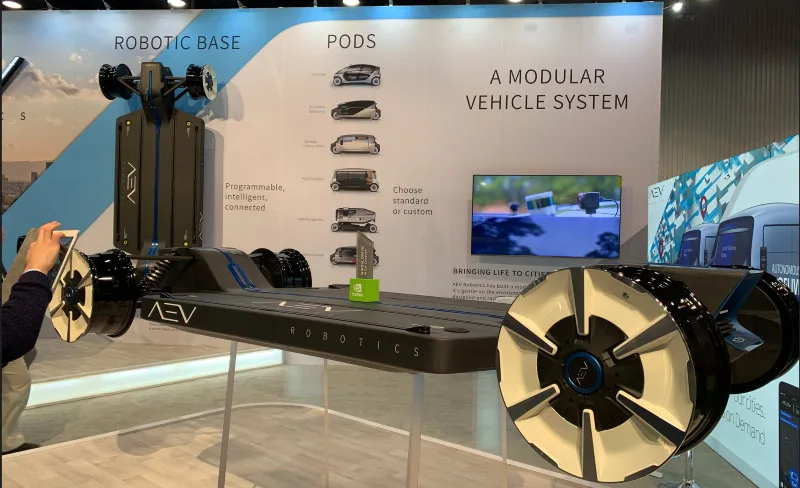 This (vision, prototype?) EV seems to say that one base can serve many uses. It would be great but there are a lot of physics an mechanical engineering in car design that say this would be “challenging.”
This (vision, prototype?) EV seems to say that one base can serve many uses. It would be great but there are a lot of physics an mechanical engineering in car design that say this would be “challenging.”
I’m just not sure where the auto section is heading. I de-prioritized it this year and next year I would imagine skipping it altogether and spending more time enjoying Eureka Park! (below).
No Wires
By far my favorite thing to do at CES is notice the ever decreasing amount of wire we have to deal with. There was a time when going to CES literally meant looking at wires, connectors, and adapters. The whole of the Hilton (now Westgate) used to be filled with booths that did nothing but adapters and strain relief packaging. Now there are no wires. Actually there are two: USB charge cables and HDMI video cables.
First, the biggest wireless topic at the show was 5G. Ha, I tricked you by including this in wireless but that is how I think about it. 5G is simply the internet for when I am not connected to WiFi. But what is 5G? I really can’t tell you. What I can say is that it was everywhere. Everyone was talking about it. There were even booths showing 5G connections being made live in some city around the world.
It is easy to be cynical or annoyed or something about 5G. The reality is that it is an amazing thing when a bunch of companies in concert choose to deploy billions and billions of dollars of capital to make our wireless connections better. The benefits of 5G remain to be understood. At least in the US, I will be most curious to see how these new frequencies get deployed when so many new “micro towers” will be needed to make the most of this. Will there be much more private connectivity? Today having a repeater or private cell is pretty rare. But maybe the secret plan for 5G is homes start having repeaters? I have no idea, except that when physics meets zoning laws, both of them prove pretty rigid and we are caught in the middle.
There was also a raging debate in every 5G booth over what 5G really means. This is no different than every spectrum/bandwidth transition. In fact this whole 5G thing feels like 4G which felt like 3G which felt like 2G. Everyone involved is pushing the envelope of “truth” and what they are promising. The only thing for certain, and this matters a great deal, is that public companies are spending billions of dollars and communities will see a lot of antennas. They believe by doing both of those things we will all see improved services to go with an improved business for carriers.
 This is a 5G access point that covers about 300m in diameter. The one below covers 30m. Makes you think about the physics.
This is a 5G access point that covers about 300m in diameter. The one below covers 30m. Makes you think about the physics.
The connectivity most of us rely on most of the time is WiFi (and boy don’t I know this after some time in rural Asia where hunting down WiFi is the first thing you do when sitting down at a place to eat). The best thing about WiFi now is the broad proliferation of convenient and easy to deploy mesh networking. There wasn’t much new in the products other than some new entrants with very similar capabilities. The software driving these matters a great deal. It is a great area for tech test labs to do good work and help us to navigate what appear to be commodity products when you just look at packaging.
Wireless headphones are ubiquitous. There are a whole range of offerings. All charge with USB-C. Many have noise cancelling. Some have microphones. So many choices. I liked the new Sony’s because the noise cancelling is incredible I could not hear anything going on in CES. And I’m partial to the new Surface headphones, but maybe that’s because my dear friend Panos gave me a pair when we got together to say hello
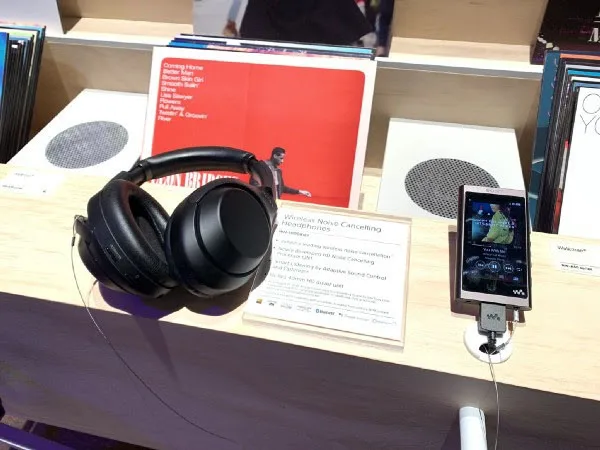
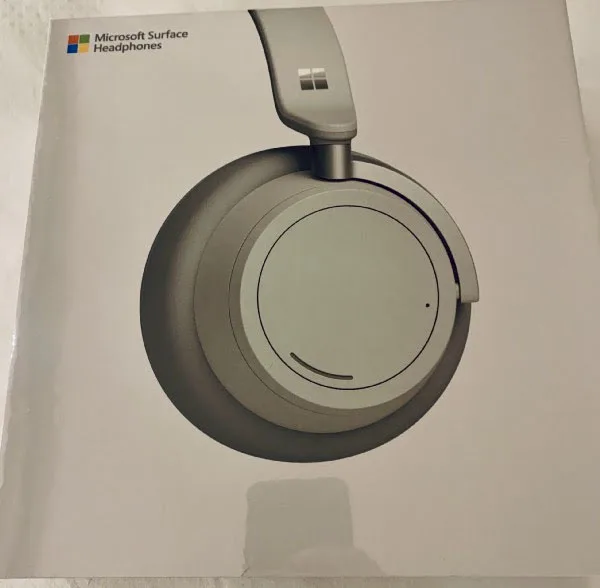 Sony’s headphones were amazing noise canceling. Love my new Surface headphones.
Sony’s headphones were amazing noise canceling. Love my new Surface headphones.
USB-C has won. That’s literally the only connector left for mobile devices, except for your iPhone charger. The only problem is that it is one form factor that means a crazy amount of things as we have come to know. I don’t know how this will shake out. Even at the most basic level, buying a charger and a cable is complicated. Here’s Belkin selling 3 different rated chargers. Also not every cable can carry every voltage. I guess we should be thankful there is one connector?
 Belkin USB-C chargers but each one is a different watt rating. How are people supposed to know?
Belkin USB-C chargers but each one is a different watt rating. How are people supposed to know?
HDMI 2.1 enabled 8K video and 48Gbps ultra speed which is cool. But you know what is really cool? These new cables are also available as optical cables that are a) super thin, b) flexible like can bend and even coil, and c) extend the range easily 30, 40, or even 50M with no fancy repeaters. While mostly we all need just one HDMI cable to go from our ATV to the TV, this is still pretty cool.
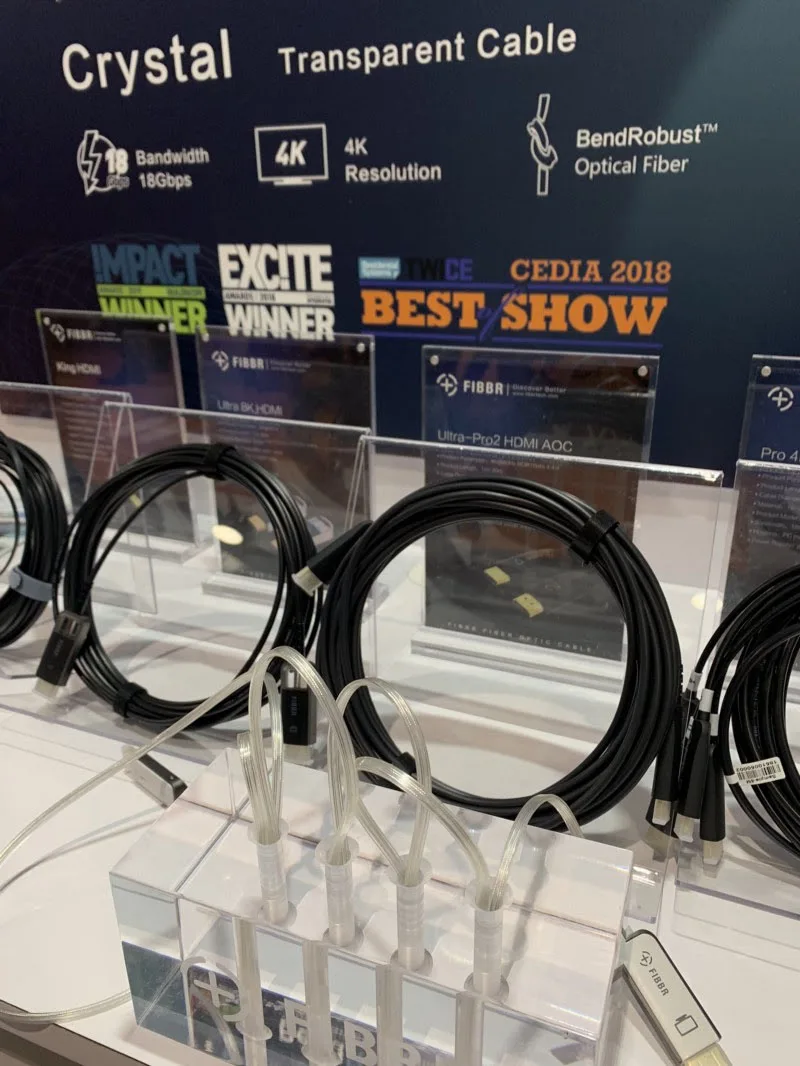 Clear and super flexible fiber optical HDMI 2.1 cables cover 50M with no amplifier.
Clear and super flexible fiber optical HDMI 2.1 cables cover 50M with no amplifier.
PCs, Gaming, Work
COMDEX was originally the PC show but it collapsed in the early 2000’s and PCs moved to CES as the main trade-show. For about 5 years PCs were the main attraction and dominated the themes and announcements at CES. Then everything shifted to mobile phones, squeezing out PCs.
Today the PC footprint is fairly minimal. Dell and Lenovo have displays setup in restaurants that you walk by on the way to the Sands exhibits. Samsung and LG devote a table to PCs (and Chromebooks). HP, Microsoft, and others have quieter space to host private meetings with the press and partners.
The big change is that PCs are no longer an enabler for other technologies. You don’t see PCs connected to any gadgets phones are used in demos now and products that need a computer use phones.
That said, PCs this year came across as much more focused and healthy because of the rise in gaming. By concentrating the PC activity around the gaming booths (where AR/VR is as well) you get the feeling of an ecosystem.
AMD CEO, Dr. Lisa Su presented her first CES keynote and it was really fantastic. Intel previously did keynotes and they seemed to always struggle. AMD had a clear message that resonated with an audience clearly made up of gamers and PC enthusiasts “high performance computing.” The keynote announced the new AMD Radeon VII graphics card, which is a beast of a card built on their 7nm platform with 3840:240:64 (cores, texture units, rops). Lots of gamer performance numbers like improvements of 30% over existing AMD cards. AMD also committed to do a better job releasing drivers for mobo/gfx through their own channel. For Windows users this is interesting you really want these drivers being pushed through Windows Update. Sigh.
Where AMD is really “taking share” (no idea if this is happening or not) from Intel is that AMD is currently in almost all the major OEMS: Acer, ASUS, Dell, HP, Huawei, Samsung, Lenovo, Apple, and across Chromebooks. They are aggressive and winning the OEMs and tech enthusiasts. Fun to see for sure!
Sidenote: The AMD acquisition of ATI in 2006 is looking brilliant. They acquired ATI for like $5B and had to borrow money (the street did not like the deal). Intel could have bought NVIDIA (if it was buyable) for only a bit more but did not. Crazy.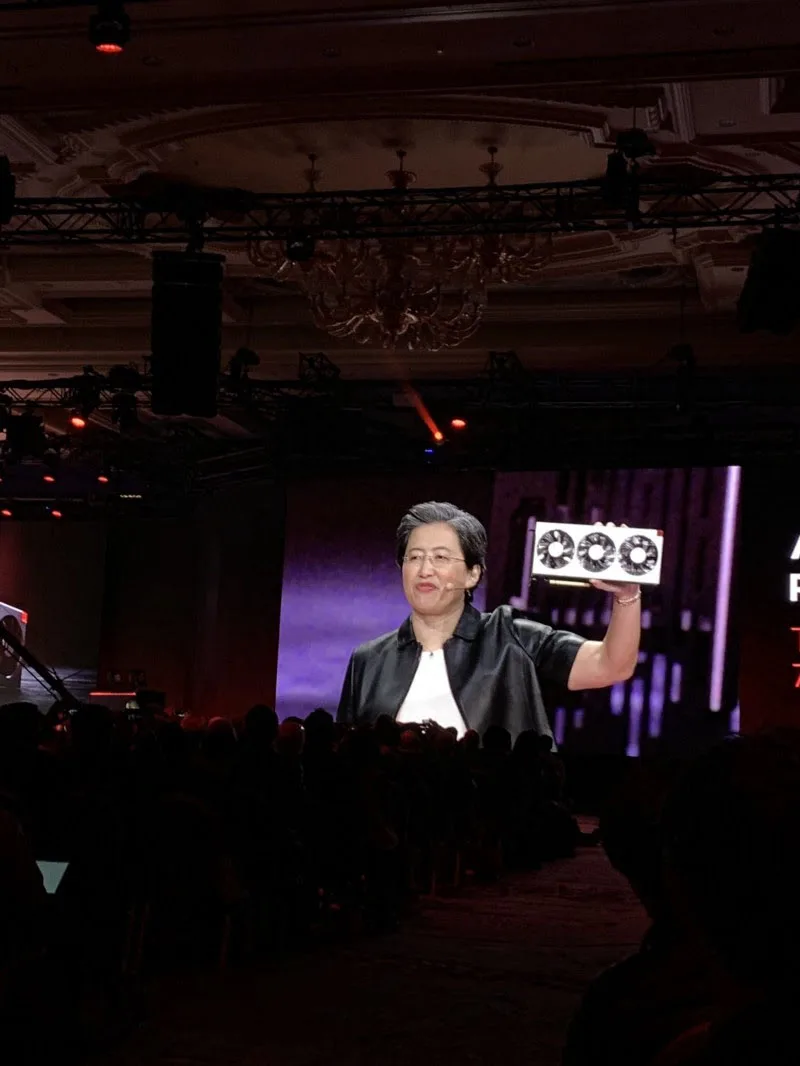 New AMD Radeaon VII announced by AMD CEO Dr. Lisa Su to a packed house of enthusiastic gamers.
New AMD Radeaon VII announced by AMD CEO Dr. Lisa Su to a packed house of enthusiastic gamers.
CES is not usually where new PCs are launched. The Samsung Flash was announced. It is a nice 13” ultra-thin running Intel N so it will not be speedy at all, but hopefully inexpensive. It is Samsung’s first fabric covered PC.

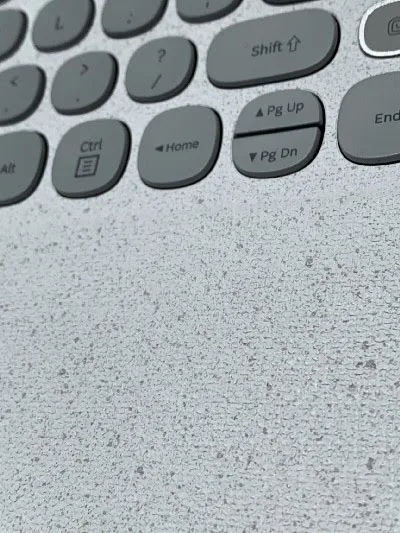 Samsung Notebook Flash is first Samsung with fabric but uses the Intel N processor.
Samsung Notebook Flash is first Samsung with fabric but uses the Intel N processor.
There were quite a few monitors and as with everything PC the target was clearly gamers. The gamer monitors are getting a bit extreme now over 40”, deeply curved and immersive. These are not going to fit in any cubicle any time soon. This is the last remaining consumer scenario for curved glass.

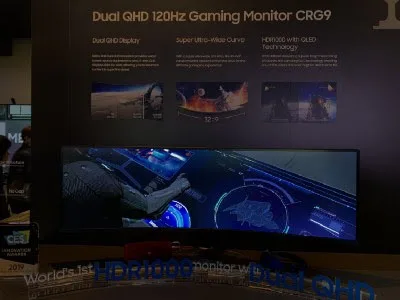
 Curved monitors found a home with gamers, at least that is the latest use. Notice on the left the monitor has dual inputs displayed, with one a wireless phone display.
Curved monitors found a home with gamers, at least that is the latest use. Notice on the left the monitor has dual inputs displayed, with one a wireless phone display.
 Razer monitor with fabric on the back.
Razer monitor with fabric on the back.
Similarly, keyboards are entirely focused on gamers. In fact, keyboards can only be found in the gaming section of the show. All the keyboards have programming colored LEDs. The kitsch trend is round retro keys though those don’t have lights so I don’t think there will be demand.
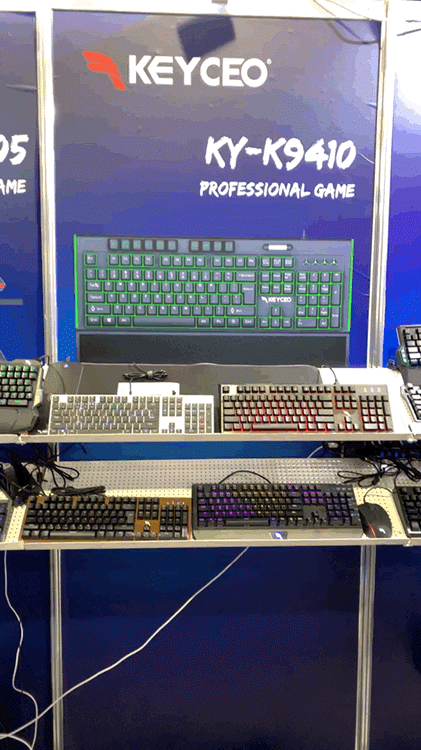 Colorful keyboards.
Colorful keyboards.
ASUS announced two crazy high performance gaming products under their Republic of Gamers (ROG) branding: a crazy motherboard and a gamer 17” laptop built like a 10lb Surface.
- ROG Maximus XI Formula MoBo. I can’t even begin to provide the specs of this motherboard. Even a photo doesn’t do it justice. But it has: DDR4/4400, Aquantia 5G LAN, Intel I219-V Gb LAN , 10 x USB 3.1, 4 x USB3.1 (Type-A Type-C), 2 x M.2, 8 x SATA 6Gb/s, Intel WiFi AC 9560, a crazy I/O panel, Audio, air and water cooled, RGB lighting and control (!), well you get the point.
- ROG Mothership. 17.3” 10lb “Surface” like laptop. 1080P/144hz, Nvidia RTX 2080, Core i9 (overclocked), 3 SSDs in RAID0, lighted keyboard that detaches, 64GB RAM, and so on. This is nuts!!
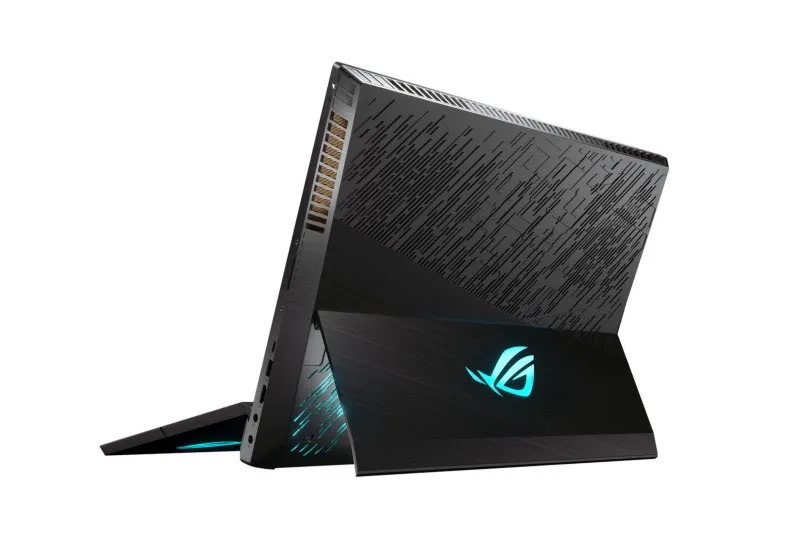
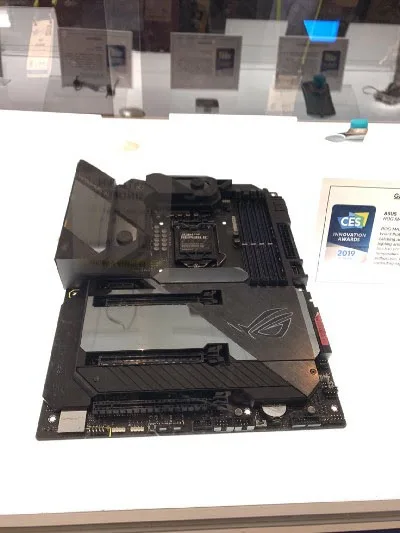 ASUS “Mothership” (ASUS photo) and Maximus MOBO.
ASUS “Mothership” (ASUS photo) and Maximus MOBO.
AR/VR had a whole section. There is progress in the hardware this year. The headsets are getting smaller and lighter. Field of vision is improving. Screens are improving. Devices are running a bit cooler. The content and scenarios are still lacking. There are a number of VR cameras aimed at capturing 360 degrees. I think we are in a lull in this space. One of the major makers will need to add some juice to this category or perhaps we are all early and there will be a step function improvement down the road?
Every once in a while a product just jumps out that seems out of place. I ran across the adok aura which is a form factor that looks like an original Amazon speaker (tall skinny). It houses a PC and a table-top projector (projects on to the table) that is touch-enabled. It is for meetings and collaboration. It has video/audio conferencing and some built in apps for defining collaboration space. Surprisingly it is a Windows 10 PC and not Android which I would have thought.
 adok aura PC that projects a touch screen. Full Windows 10 PC
adok aura PC that projects a touch screen. Full Windows 10 PC
Eureka!
As mentioned up top, the Eureka! space has become almost an entirely different show. The booths are tiny, but the energy is immense. This is sort of a tech show but definitely much more like “consumer goods” than consumer “electronics.”
What I love about this area is the founder energy. There’s a hustle. The founders look up at you. They start their demos. They ask you to listen. They shout at you “have you ever had a problem with….well we solved it.” It is exhausting to walk through the area but fun.
The reality is the products are much more like what you’d see on QVC or Sharktank. They are technical but not technology. They solve life’s little problems. Basically these are products for your Baby, Pet, Plant, Kids, Backs, Feet, Skin, Head, Nose, Knees, Eyes, Sleep, Hair (or not), and more…
Here is where you see bike helmet lights, safety vests, gloves that work with touch screens, and more.
These products are all fun.
There are a lot of cooking and food products as well.
Here were three of my favorites, just because I loved them no other reason.
It is a 3D printer that prints chocolate!!
 It is a robot bread maker that makes flat bread!
It is a robot bread maker that makes flat bread!
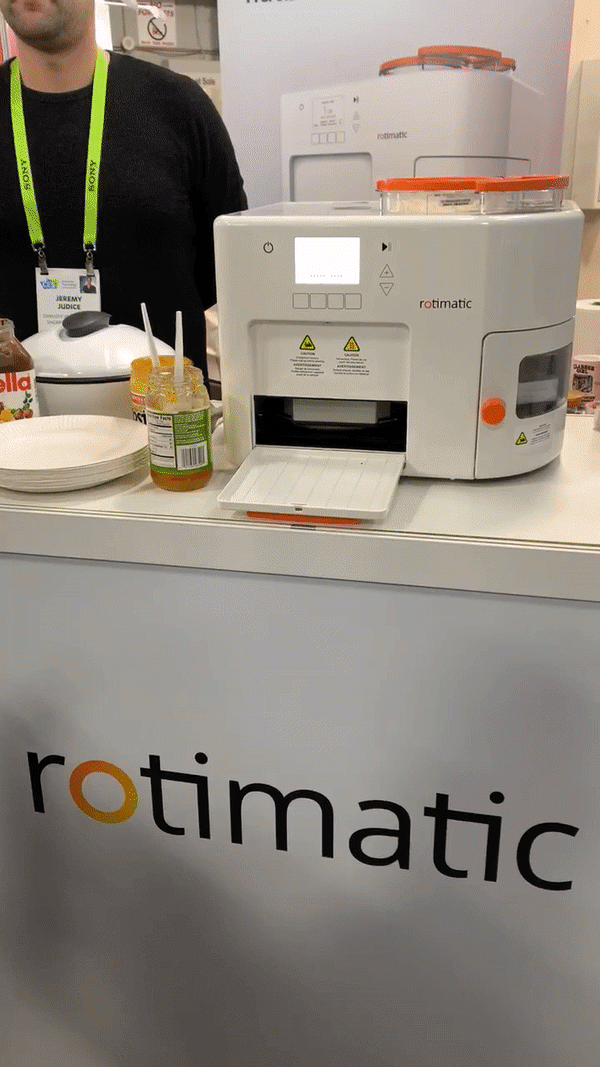
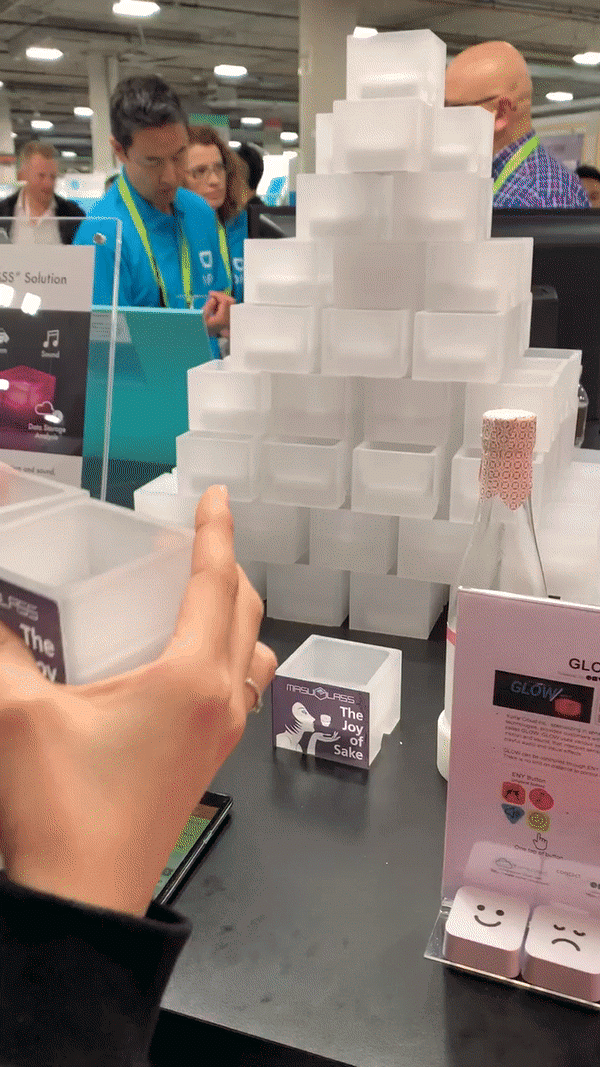 This is a Sake set that is LED illuminated and can be choreographed via an app connected over Bluetooth. When the glasses touch the lights go off in unison!
This is a Sake set that is LED illuminated and can be choreographed via an app connected over Bluetooth. When the glasses touch the lights go off in unison!
Just Have To Share
Every year there are a few things that I just have to share. I love seeing this creativity, hustle, and entrepreneurship.

From Ukraine, this is a reusable notebook. Use any pen or pencil and with a solvent you can clean the pages. The hustle in this booth was incredible. See nuka.me. PS: you can’t tear the paper!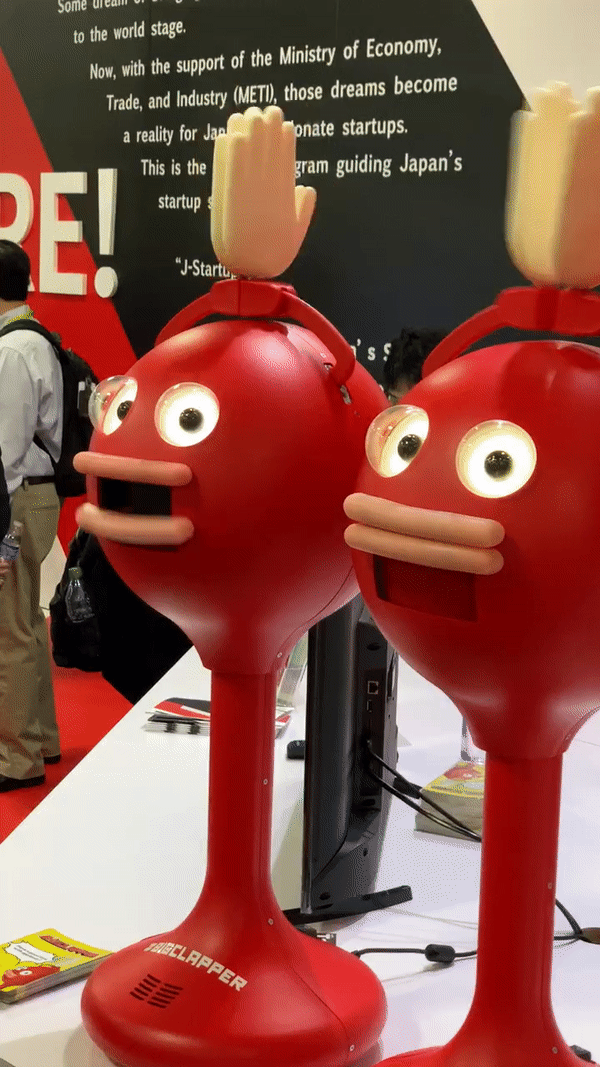 BigClapper is from Japan and is a modern variant on Maneki Neko. It can welcome, celebrate, attract, and more!
BigClapper is from Japan and is a modern variant on Maneki Neko. It can welcome, celebrate, attract, and more!

Love love this!Basepaws consumer kitten DNA test, sort of a 23andMeow [sic]
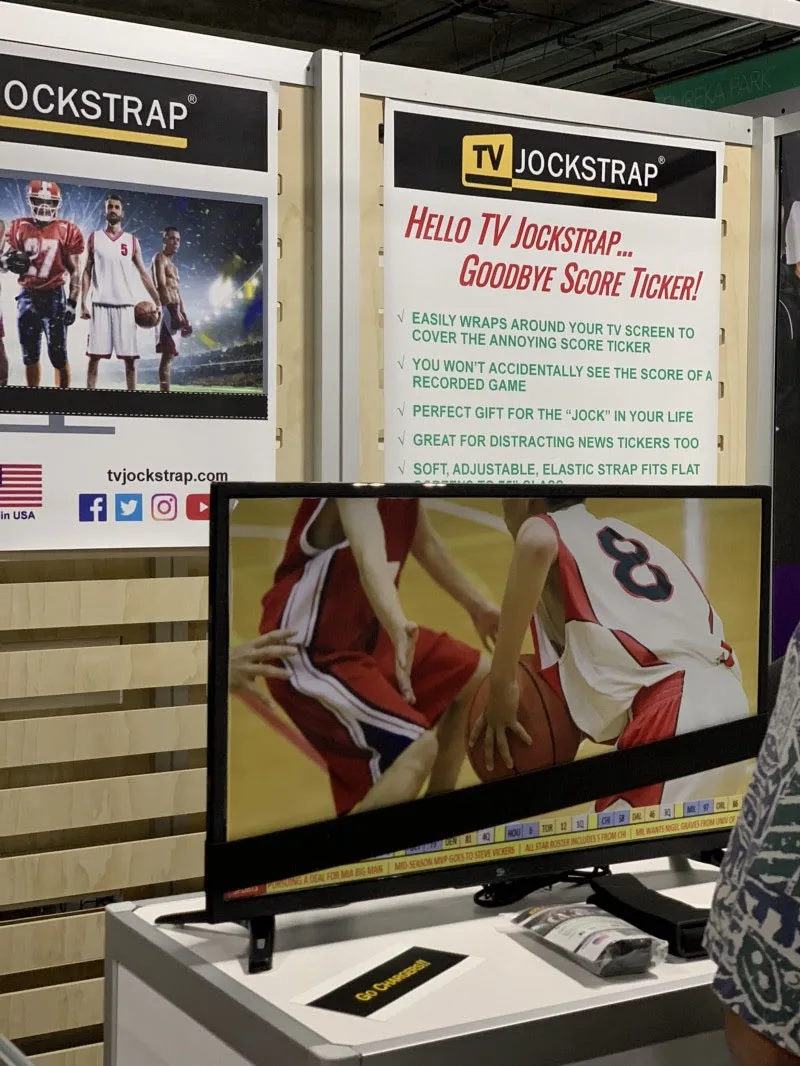 And this year’s winner for both low-tech and low-brow. Yes this is a rubber band for your TV so you don’t have to see chyrons. Sharktank ready I suppose.
And this year’s winner for both low-tech and low-brow. Yes this is a rubber band for your TV so you don’t have to see chyrons. Sharktank ready I suppose.

